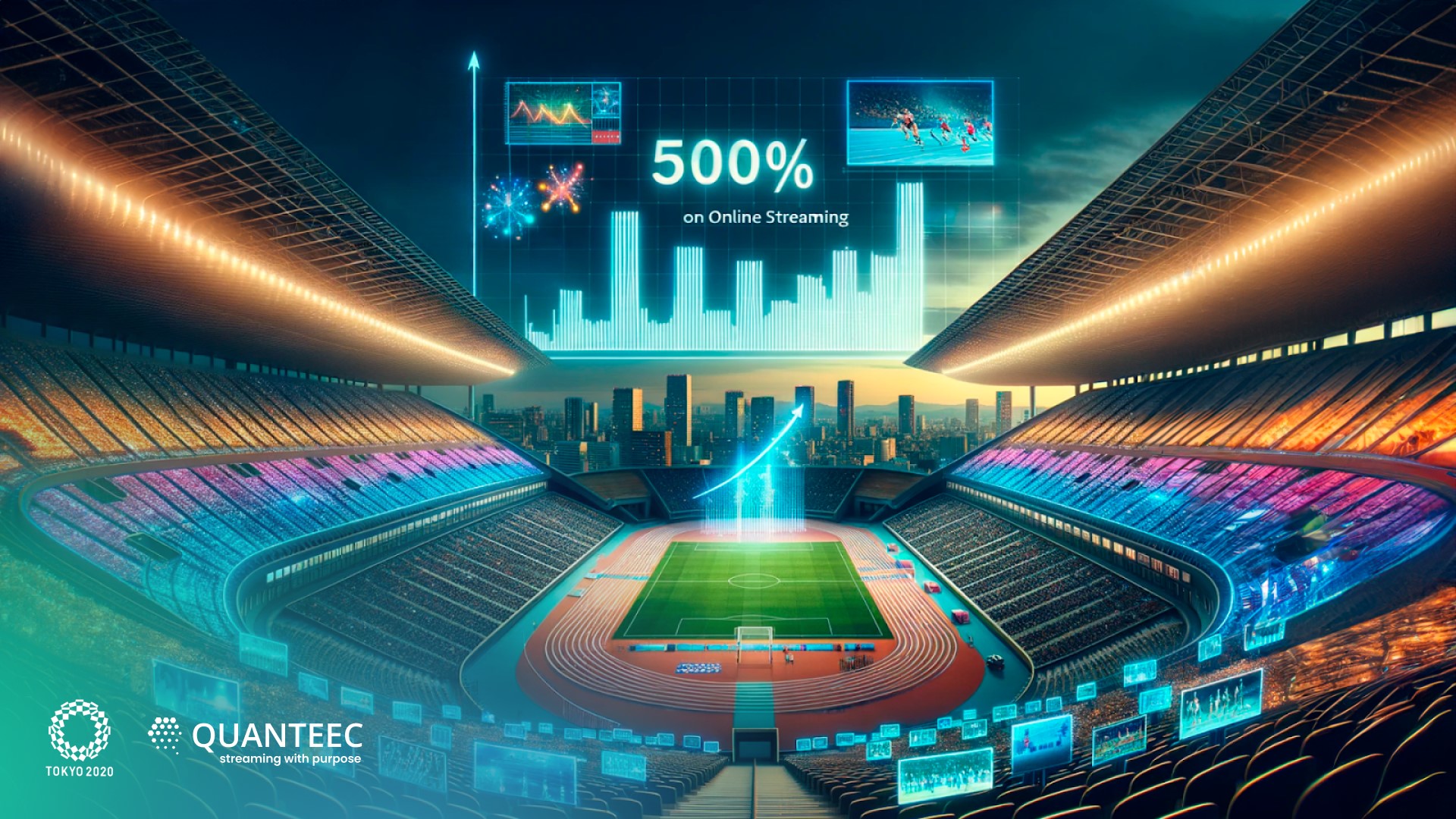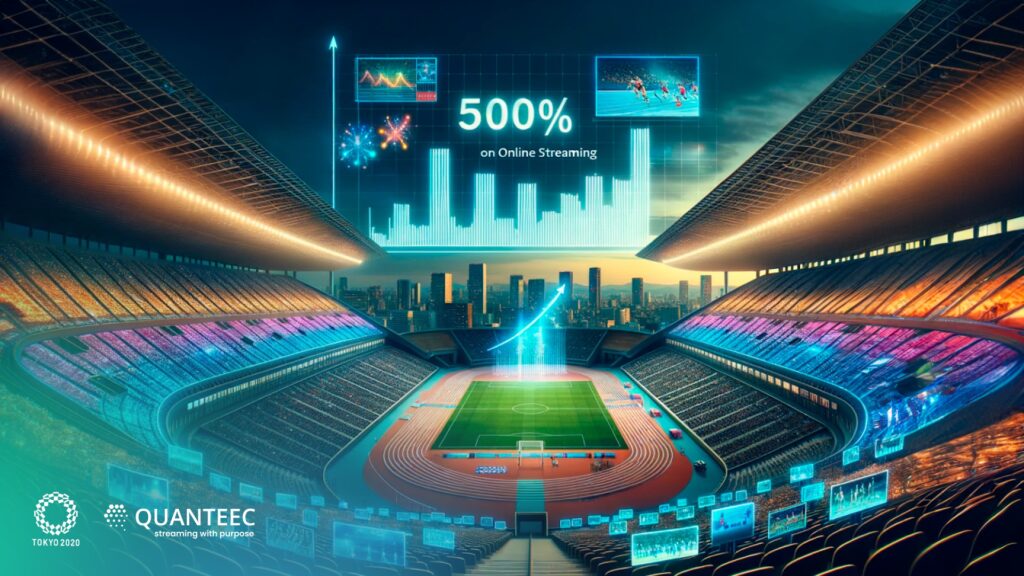
Navigating the Incredible 500% Streaming Audience Surge from Tokyo 2020
As Paris 2024 approaches, thinking about the streaming aspects of past events offers a new possibility to anticipate and prepare.

A trip to the memory
The Tokyo 2020 Olympics, rescheduled to 2021 due to the COVID-19 pandemic, showcased an unparalleled athletic spectacle. With largely empty stadiums, viewers worldwide flocked to streaming platforms to partake in the excitement. Notably, the basketball clash between France and the USA drew attention, not just for its captivating finish but also for the astonishing 500% boost in online viewership.
The well-known challenge of Audience Peaks
Catering to a 500% audience surge is a Herculean task. It demands immense server capacity, impeccable scalability, and a relentless commitment to quality. Traditional Content Delivery Network (CDN) setups can falter under such pressure, risking crashes, compromised quality, and viewer discontent. This can have serious ramifications, from lost revenue to tarnished brand image. In Tokyo’s instance, the streaming was smooth due to augmented CDN provisions. Yet, servers prepared for such massive spikes ran underutilized for most of the Games, implying an ecological concern since server energy consumption doesn’t dip when they’re not at full capacity.
To simplify, if broadcasters prepare for the worst-case scenario (like a 500% surge), disregarding the significant costs, servers run ready for an audience spike that might never come. Conversely, when such extensive provisions aren’t made, we witness collapses, reminiscent of YouTube’s World Cup streaming or the Super Bowl and Serie A matches last year, leaving viewers in the lurch.
Achieving More with Less
In the evolving landscape of streaming technology, there’s a palpable shift towards decentralized models. Such a move draws inspiration from Web3 structures, highlighting the industry’s need to accommodate larger audiences without the constant introduction of new server infrastructure. This not only ensures smoother streaming experiences during unexpected surges but also leverages existing resources for optimal results.
Furthermore, with the ever-increasing global attention on sustainable practices, the streaming sector isn’t exempt. The industry’s energy consumption has begun rivaling that of entire nations, which underscores the importance of aligning profit margins with environmental stewardship.
Among the various innovations, consistent and high-quality viewing remains paramount. It’s vital that the technology, regardless of how advanced, captures every significant moment for the viewer.
It’s worth noting that companies like QUANTEEC are part of this ongoing conversation, seeking solutions that integrate scalability, sustainability, and quality in the complex world of streaming.
You can learn more about QUANTEEC’s Revolution here.
Gazing at the Future of Olympic Streaming
The thrilling match between France and the USA at the Tokyo 2020 Olympics highlights the evolving challenges in contemporary streaming. As audiences surge and standards rise, few technologies can ensure the integrity of the streaming without incurring additional transmission or development costs. The essence of events of this magnitude lies in their unpredictability. The intensity of delivery varies, and not all sports attract a uniform audience. Therefore, broadcasters must meticulously strategize to ensure consistent, high-quality streaming throughout the Games. One of QUANTEEC’s central efforts involves examining various scenarios and simulating potential outcomes. In scenarios like the Olympics, with unpredictable viewership spikes, our solution emerges as ideal.
The Fair Price
Today’s streaming platforms navigate a highly competitive market characterized by shifting demands, fierce competition, high expenses, and daily technical challenges. Within this landscape, pinpointing the equilibrium between investing in high-quality service and managing the costs becomes critical. The collaborative streaming model presents a unique scenario; its largely decentralized technological approach has demonstrated enhancements in streaming quality through the leveraging of underutilized resources, simultaneously reducing distribution costs for platforms. Consequently, an increasing number of platforms, particularly those with constrained budgets and time, are showing interest in such technologies.
Conclusion: Back to the Olympics
Analyzing past cases propels us toward better solutions for the future. The evolution of streaming technologies is growing exponentially, with ultra-low latency taking priority in executive decisions due to its importance to both spectators and platforms. As we approach the Paris 2024 Olympics, we must be ready for any eventuality, armed with the extensive experience gained from the unconventional Tokyo 2020 Olympics. The development of decentralized technology as QUANTEEC dreams of being used in an event like the Olympics for several reasons, but above all for the ecological value and quality that can be recorded. It could be a positive change for streaming and especially for viewers who will be able to enjoy a unique experience from each of their devices.